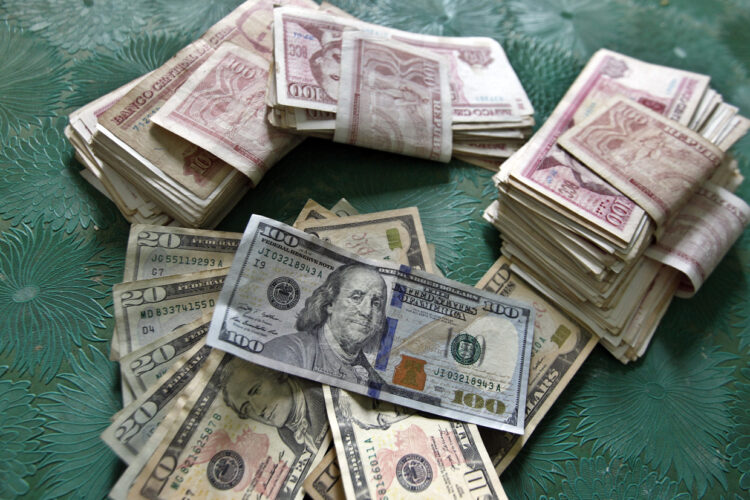Three currencies, four exchange rates and two markets: that is the monetary chaos in which Cubans operate in an environment of inflation, scarcity and dollarization. And the area in which Havana wants to bring order, despite the doubts of experts.
The Cuban government announced, within a severe adjustment plan, that in March it would take measures to end these distortions, predictably starting with a devaluation and unification of the exchange rate. However, nothing concrete has been announced yet.
The adjustment —with strong price increases in fuel, electricity, water and transportation— aims to reduce the fiscal deficit and reactivate an economy plunged into a deep crisis for three years due to the pandemic, the tightening of U.S. sanctions and mistakes.
“The financial sphere is the result of the economic disaster in the country,” economist and university professor Omar Everleny explained to EFE. He believes that the Cuban economy is “at its worst moment” and said it was “inconceivable” that there are two official exchange rates.
The official exchange rate is one dollar to 24 pesos for companies and one dollar to 120 pesos for the average citizen. On the street, the USD is currently trading at more than 320 pesos after a depreciation of more than 1,000% in three years, according to the index of the independent newspaper El Toque, a reference for the informal market.
For a time, due to banking restrictions limiting cash withdrawals, a fourth exchange rate was established between the peso in hand and the one recorded in the account. That gap has almost disappeared.
Also operational is the Freely Convertible Currency (MLC), a virtual currency with a theoretical value equivalent to the dollar (on the street it is lower) and valid in some state stores. Its use is declining, partly due to an erosion process initiated by the government itself.
To this we must add the growing interest in the dollar and the euro, treasured by individuals (to emigrate) and companies (to import), as highlighted by Everleny and the economist Tamarys Bahamonde.
Hard currencies are also a shield against the loss of value of the local currency due to inflation and depreciation.
Lack of trust
Economist Juan Triana sees an underlying problem of “trust” in the peso and the government’s economic policy and, like the other three experts consulted, he is skeptical about the coherence, depth and repercussions of the government plan.
To explain the current situation, they go back to the Reorganization Task, a failed economic and monetary reform of 2021 that did not end monetary duality (the convertible peso was replaced by the dollar) and skyrocketed prices.
Triana considers that a devaluation should be framed in a program that encompasses a “productive transformation,” a reduction of the state enterprise and bureaucracy, and a “macroeconomic adjustment and stabilization program.”
Bahamonde believes that the collapse of the local currency is the patient’s “fever” and encourages addressing the causes and not just the symptoms: “The peso has to recover its function as money.”
She adds that the devaluation seems “necessary” to reduce distortions, but she does not believe that the benefits offset the impact “among people who are already impoverished” due to the lack of compensatory social policies.
Among economists there is a great consensus regarding the inflationary effect of this measure, which would add to the increase of more than 400% in fuel prices recently applied.
Cuba imports 80% of what it consumes and barely exports, so a devaluation would further fuel the sharp increase in prices in recent years (77.33% in 2021, 39.07% in 2022 and 31.34% in 2023).
Economics professor Mauricio de Miranda also argues to EFE that a devaluation would “encourage dollarization.”
Triana and Bahamonde believe a floating regimen between bands is preferable, and De Miranda advocates a “flexible” and “single” exchange rate determined “by an institutional, legal and transparent market.”
Where to set the new exchange rate would also be problematic given the large gap between the formal and informal exchange rates, as would defending this new exchange rate, all experts agree, because they consider that the Central Bank of Cuba does not have the necessary foreign exchange reserve.
“The moment is very difficult for the measures they want to take to be successful,” concluded Everleny.










